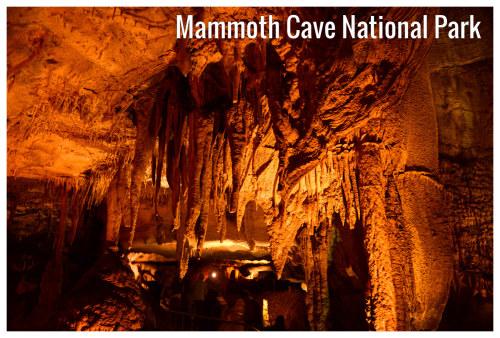
November
Weather in November
Temperature
The arrival of November in Mammoth Cave National Park indicates a decrease in the average high-temperature, moving from a pleasant 69.8°F (21°C) in October to a moderate 57.2°F (14°C). A pronounced dip becomes evident during the nights in November as Mammoth Cave National Park logs a consistent average temperature of 35.6°F (2°C).Rainfall
In Mammoth Cave National Park, in November, during 10 rainfall days, 4.21" (107mm) of precipitation is typically accumulated. In Mammoth Cave National Park, during the entire year, the rain falls for 126 days and collects up to 50.63" (1286mm) of precipitation.Daylight
The average length of the day in November is 10h and 11min.On the first day of the month, sunrise is at 7:09 am and sunset at 5:46 pm CDT. On the last day of November, sunrise is at 6:39 am and sunset at 4:27 pm CST.
Note: On Sunday, November 3. 2024, at 2:00 am, Daylight Saving Time ends, and the time zone changes from CDT to CST. Daylight Saving Time starts again on Sunday, March 9. 2025, at 2:00 am; consequently, the time zone reverts from CST to CDT.
Sunshine
In Mammoth Cave National Park, the average sunshine in November is 5h.UV index
In November, the average daily maximum UV index is 3. A UV Index estimate of 3 to 5 represents a moderate health risk from unsafe exposure to UV radiation for ordinary individuals.Note: An average maximum UV index of 3 in November leads to these recommendations:
Take necessary precautions - Defending against sun damage is advocated. The Sun is most powerful around mid-day, so it's a good practice to reduce direct exposure. Opt for tightly woven and loose clothing to enhance protection from the Sun.
Published by: Weather U.S. | About Us
Data Sources | Weather Forecasting & Climate
Frequently asked questions
What are November temperatures?
How much does it rain in November?
What is the average length of the day in November?
What time are sunrise and sunset in November?
When does Daylight Saving Time (DST) end in November in Mammoth Cave National Park?
How long on average sun shines in November?
What is the UV index intensity in November?

Average temperature in November
Mammoth Cave National Park, KY
- Average high temperature in November: 57°F
The warmest month (with the highest average high temperature) is July (88°F).
The month with the lowest average high temperature is January (41°F).
- Average low temperature in November: 36°F
The month with the highest average low temperature is July (66°F).
The coldest month (with the lowest average low temperature) is January (23°F).

Average rainfall in November
Mammoth Cave National Park, KY
- Average rainfall in November: 4.2"
The wettest month (with the highest rainfall) is May (5").
The driest month (with the least rainfall) is October (3").

Average rainfall days in November
Mammoth Cave National Park, KY
- Average rainfall days in November: 10 days
The month with the highest number of rainy days is March (13 days).
The months with the least rainy days are September and October (8 days).

Average daylight in November /
Average sunshine in November
Mammoth Cave National Park, KY
- Average daylight in November: 10h and 1min
The month with the longest days is June (Average daylight: 14h and 42min).
The month with the shortest days is December (Average daylight: 9h and 42min).
- Average sunshine in November: 5h
The month with the most sunshine is June (Average sunshine: 10h).
The months with the least sunshine are January and December (Average sunshine: 4h).

Average UV index in November
Mammoth Cave National Park, KY
- Average UV index in November: 3
The months with the highest UV index are June and July (UV index 10).
The months with the lowest UV index are January and December (UV index 2).